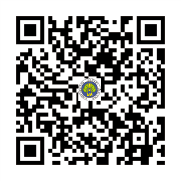Identifikasi lapisan akuifer menggunakan metode geolistrik konfigurasi wenner di daerah kering desa Kalitengah kecamatan Panggungrejo kabupaten Blitar
DOI:
https://doi.org/10.17977/um067v2i1p61-66Keywords:
Aquifer, Geoelectrical method, Wenner Configuration, ZondRes2DAbstract
Kalitengah Village, Kecamatan Panggungrejo, Kabupaten Blitar is a lack of ground water place, most of it is karst area. In dry season, villagers had to do hard work to find clean water source. They even have to buy it from another place. it was happened because not all of their well produces adequate amount of clean water. This research purposed to get information about spread and depth of the aquifer layer in Kalitengah Village, KecamatanPanggungrejo, Kabupaten Blitar in order to make new source of clean water. By using value of rock resistivity and subsurface structure information, clean water source can be located. The method of this research is geo-electrical wenner configuration with sounding technique. One point of sounding applied at known well as reference, and 25 points of sounding with 5 m separation as guess mapping the presence of subsurface aquifer. Acquisition have done by locate the current and potential electrodes position. Then, the current was injected until value of apparent resistivity appeared. These processes repeated until the entire area has been mapped.The result showed the subsurface resistivity value of research area. The resistivity of ground water in reference sounding point is 28-32 Ohm-meters and found in 15m below the surface. in sounding point 1-20, there is no presence of ground water aquifer. Interpretation on the result of software ZondRes2D shows resistivity value less than 28-32 Ohm-meters. The resistivity of ground water in reference sounding point is 28-32 Ohm-meters and found in 15m below the surface. Aquifer layer found at point 1 – 25 with dept about 7, 25 – 18,5 m, interpretation on the result of software ZondRes2D. The aquifer became thicker from sounding point 1 to 25 and from 3D section showed the spread of aquifer is tend to south and west.
References
Asare, V. D. S., & Menyeh, A. (2013). geo-electrical investigation of groundwater resources and aquifer characteristics in some small communities in the gushiegu and Karaga districts of Northern Ghana. International Journal of Scientific & Technology Research, 2, 25-35.
Badan Penanggulangan Bencana Daerah Kabupaten Blitar. (2014, Agustus 24). 36 Desa Di Kab Blitar terancam Rawan Kekeringan. www.blitarkab.go.id/2013/09/8932.html
Chidambaram Chidambaram, S. (2013). Identification of groundwater potential zone by using GIS and electrical resistivity techniques in and around the Wellington reservoir, Cuddalore district, Tamilnadu, India. European Scientific Journal, 9(17).
Odong, P. O. (2013). Groundwater potential evaluation and aquifer characterization using resistivity method in Southern Obubra, Southeastern Nigeria. International Journal of Environmental Sciences, 4(1), 96-105.
Santoso, D. (2002). Pengantar teknik geofisika. Bandung: ITB, 99-110.
Sari, S. A. (2011). Identifikasi zona lemah karena intrusi air dengan metode geolistrik konfigurasi wenner (Studi kasus desa Joho Kecamatan Kalidawir Kabupaten Tulungagung) (Doctoral dissertation, Universitas Negeri Malang).
Sultan. (2009). Penyelidikan Geolistrik Resistivity pada Penentuan Titik Sumur Bor untuk Pengairan di Daerah Garongkong Desa Lampang Kecamatan Tanete Riaja Barru,12 (2). http://puslit2.petra.ac.id/ejournal/index.php/enjiniring/article/view/17846
Syuhada. & Anggriono, T. (2013). Penentuan Transmisivitas Akuifer di Daerah Padarincang dengan Menggunakan Data Geolistrik Sounding, 31 (1). www.fisika.lipi.go.id



1.png)
4.png)










